pennsylvania art education association
now browsing by tag
Highlighting the Positive of Covid Lesson Planning: Finding the Convergence of Content and SEL
Blog post written by Region 11 Representative, Holly Meade

Holly Meade is a Middle School Visual Arts teacher at Downingtown Middle School. She has a BFA, M.Ed in Childhood Development, and additional certifications in ESL and SEL. Region 11 PAEA rep
I am currently teaching virtually, predicted to soon to be hybrid, but anticipating anything can happen and probably will, going back with 2-days notice, wearing a hazmat suit to class, anything. I counted the amount of times I heard the word fluid during a zoom meeting, 9. Fluid is the new moist, the word is dead to me now, a Covid vocabulary casualty, joining unprecedented. As an attendance check-in, I asked my students to describe 2020 in one word, here are some responses: canceled, oof, oop, crazy, disaster, worst (most popular answer), exhausting, my personal favorite… dumpster-fire (I let that slide as one word), luckily no one used unprecedented. Whatever word you choose to describe what’s going on right now, it’s stressful and become more important than ever that we create a space that’s welcoming, supportive, and safe. An environment where content connects rigor and engagement with social and emotional learning (SEL). A meaningful convergence.
Art teachers are naturals at creating projects which spark joy, are hands-on, engage students authentically and our lesson design process naturally fits into the UbD format. Many school districts are imparting SEL into advisory blocks or guidance department lead lessons, but how do make this sustainable and creatively connect the SEL and content in an authentic way.
You can build upon what your district or individual school has been spotlighting or reinforce it. Many schools are focusing on self-management which is regulating emotions and managing stress. I examined my curriculum and lessons that I would be doing if we were in person and adjusted the content to converge with SEL domains that were not already being covered by school mandated lessons, like stress management. On a side note, I’m not managing my stress well, so I didn’t feel this was a skill I could model at this moment. I do not see recreating lessons as additional work, I see it as an opportunity to examine what is important to creating a safe supportive space that supports social and emotional learning while not sacrificing content or rigor. The examination gave me the opportunity to work SEL into the content lessons in a meaningful way. For example, when reflecting upon the dumpster fire (now one word) that is happening around us. I looked at my own children and how they were feeling powerless and without a meaningful voice. This prompted me to recreate a unit called Artists and Identity and add Voice to the mix. I found it manageable to re-create my content by highlighting just 2 of the 5 SEL domains, self-awareness, and social awareness. Because of the change in teaching format to virtual, I had to recreate how I am delivering content anyway, and when (if) we return to in-person learning, who knows what sharing supplies will look like, so it is great timing for an update. Yes, I found one positive in 2020 lesson planning. Using essential questions that tie emotions with content is another way to practice and model SEL skills while building connections.
Art is empowering. Teaching and modeling how artists use their voice for change and to highlight social issues has been amazing. We are making connections of voice and historical context using Dorothea Lange to the NBA uniforms and the work of a local artist, Russell Craig. I wish I had always given them more opportunity for discussion! We often underestimate how much our students are paying attention to the events of the world and their ability to talk about it. But like Mr. Rodgers said, “Anything human is mentionable and anything mentionable is manageable.” Taking time to create a safe, supportive space is essential for building an environment where students can connect and discuss challenging feelings, which teaches, models, and gives students an opportunity to practice SEL skills like empathy. We do need to evaluate our environments and do everything with compassion. Not just in Covid class, always in our class.
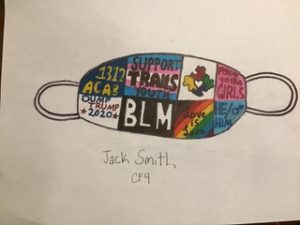
Intro design project building voice, identity, and empathy by letting others see our voice and letting someone else into your world
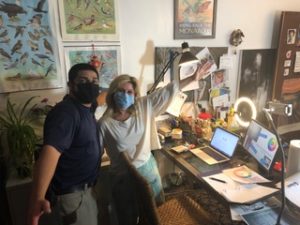
Embracing the chaos with the Comcast technician 20 minutes before hosting virtual Back-to-School Night
Creating a Staff Mural & Building Morale
This blog post is contributed by Jes Noel. Jes
As art educators we create art with our students however have you ever considered creating art with your peers? And I am not talking fellow art teachers I am talking about the other educators in your building that DON’T teach art! Well, I am here to tell you it is possible!
This past 2018 – 2019 school year I created a staff mural with my fellow 70 educators, paraprofessionals, administration, secretaries and custodians. With the help of my building principal, we found time in six-morning meetings throughout the year to create our mural with was unveiled in April during our annual Celebrate the Arts Night. Our inspiration came from the street artist Kelsey Montague and her #WhatLiftsYouSchools movement.
First Morning Meeting:
I prepared a PowerPoint to explain to staff what our initiative for the year exactly was. Our Goal: create a staff mural to gift to our students in April inspired by Montague’s wings which also tied into our new social media initiative. #ironkidssoar
Second Morning Meeting:
Staff painted two pieces of paper with acrylic paint which would ultimately be turned into 4 feathers per staff member. Staff was limited to red, orange, yellow, blue, green or purple paint.
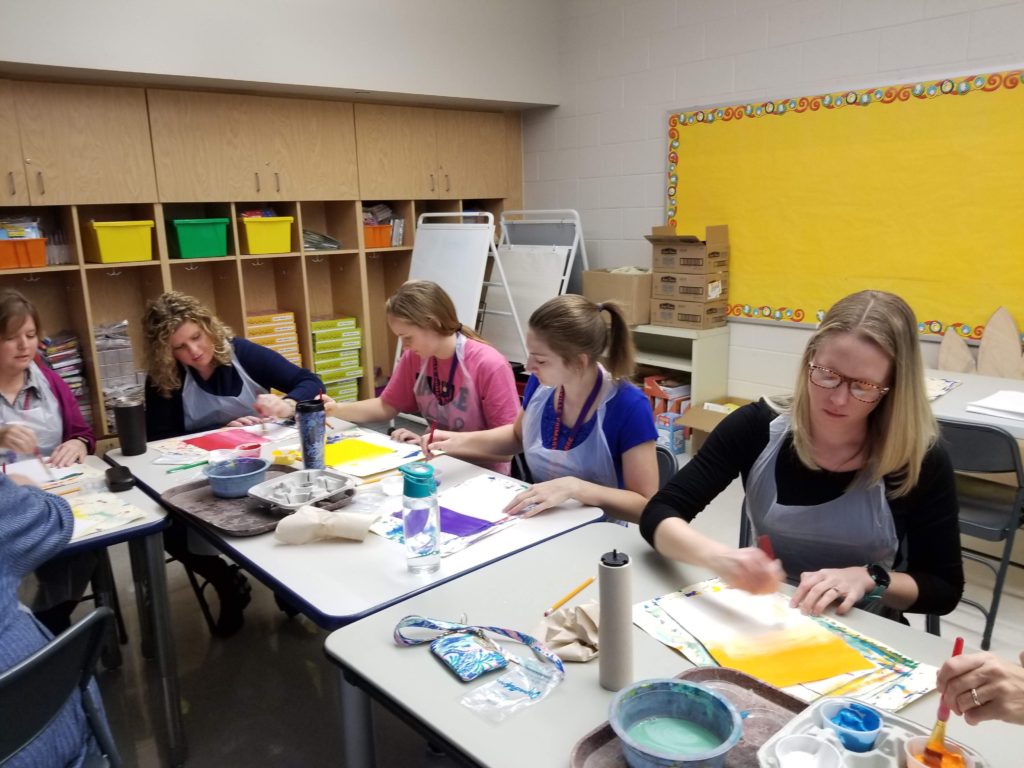
Third Morning Meeting:
Staff were introduced to the Zentangle Method and practiced Zentangle on a 3×3 square.
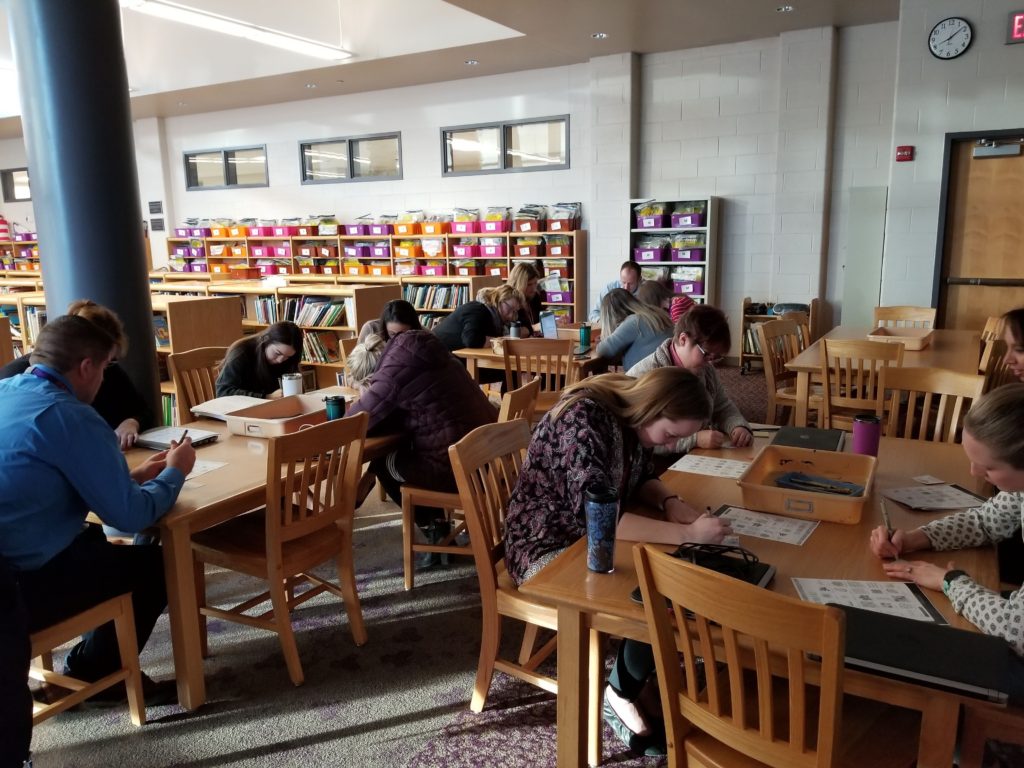
Fourth Through Sixth Morning Meeting:
Staff Zentangled two of their four feathers for the mural. Feather stencils were provided for continuity along with multiple handouts and examples. The other two feathers remained blank.
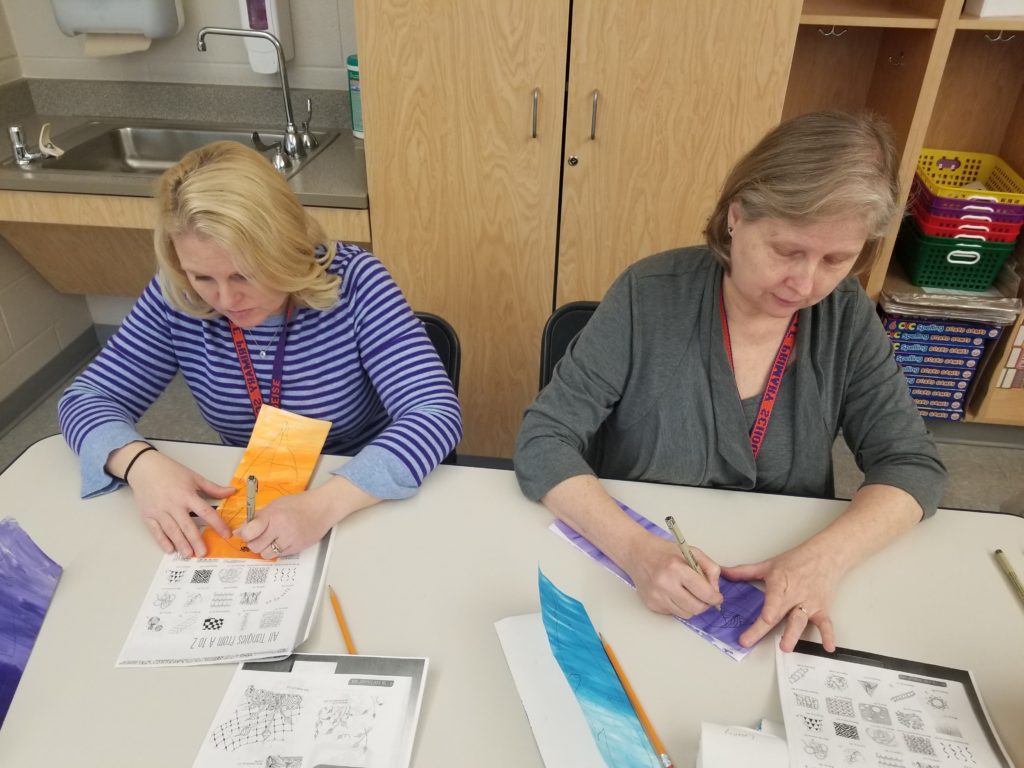
Upon completion of all the feathers after the sixth-morning meeting, I and a fellow first-grade teacher began the process of laying and gluing all 280+ feathers onto plywood that we had cut into the shape of wings.
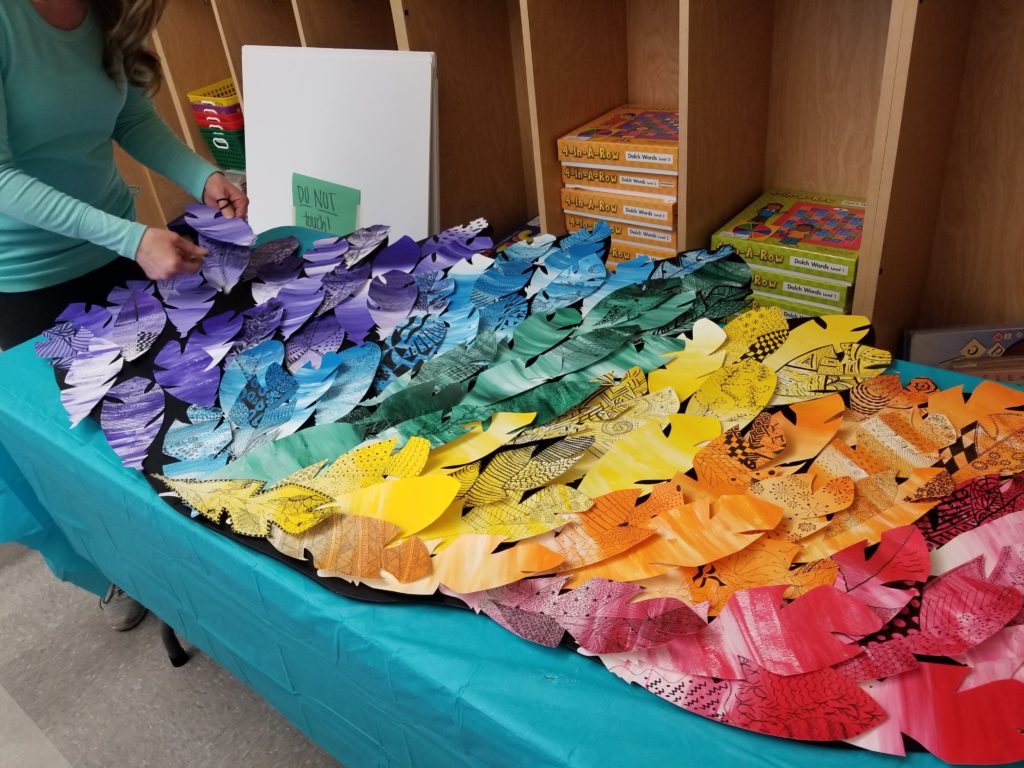
After many, many, MANY coats of Mod Podge, the wings were ready to hang! The staff had voted to entitle our group mural “At DPS, Our Dreams Take Flight.” With the help of our maintenance department, we hung our wings in the main hallway for prime viewing and interaction.
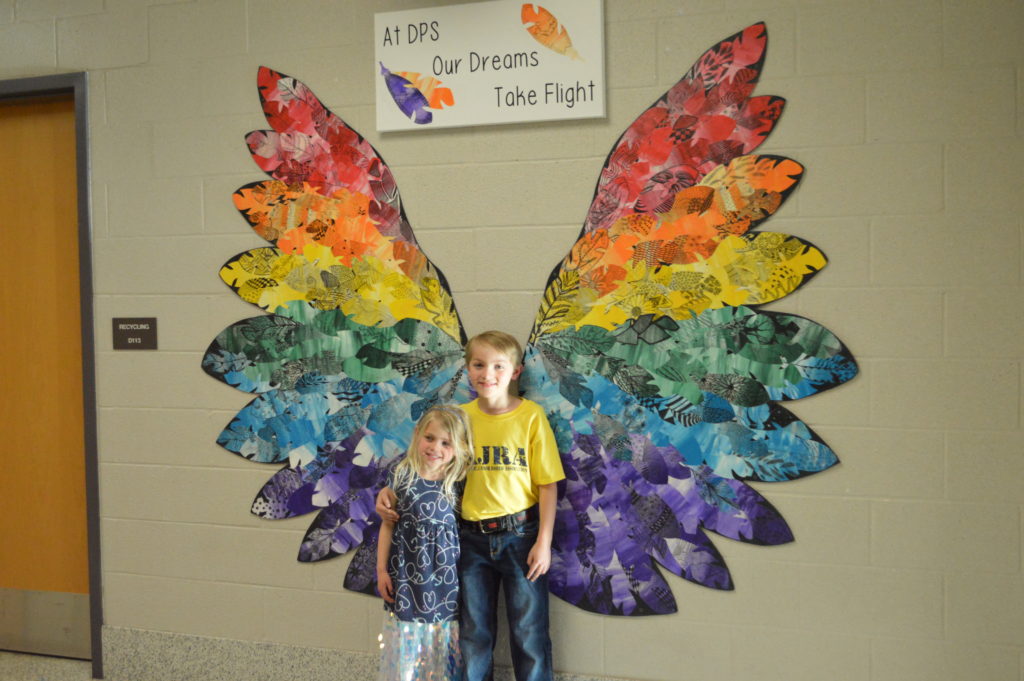
Organization in the Art Room
The following query was posted to our PAEA Facebook Page. Members chimed in, and their responses are below for your benefit and organizational enjoyment! I’m getting goose pimples already thinking about the wonderful ways to organize!!!!
“Please share some of your unique and successful classroom organizational devices/structures. How do you store 2-D work? How do you store 3-D work? What do you feel is necessary to always have on the table? What are your art room life hacks? Etc…”
Marita Fitzpatrick of Bodine High School in Philadelphia suggests: “For small 3d (our recent stuffed toys): I have a copy paper box for each class. The students put their work in manila envelopes, write their names on them and I have one person from each table collect the envelopes and return them to the box. For 2d, each table puts their work in folders marked w the table color (tables are color-coded) and that goes in the copy paper box. This box is marked, period 1, period 2, etc. I have a closet of shelves for ceramics and each kid gets a shoe box to store their stuff in. It keeps the others from touching the work and breaking it. Students wrap their work in dry cleaning plastic to keep it moist. I regularly have kids empty the drying rack, sort the work and put it in the copy paper boxes. I keep nothing on the tables, because the stuff disappears and they put trash in the containers. I store markers and colored pencils in plastic pencil boxes on open shelves in the room and number them. I never look at the numbers or count them, but the kids think I do, so nothing disappears. On those shelves, I also have scissors and other frequently used supplies that students have open access to.”
Alison Elizabeth of Lancaster, PA shares her planning strategy: “Each class I teach is a different colored sticky note. This calendar is glued into the front of my sketchbook (which I use for all of my demos, meeting notes, and conference notes). It’s all with me and ready to go at all times.”
Linda Keels suggests making the investment in folding tables from the local hardware store (she uses 3) for about $30-40 a piece—there is room to hold up to 6 classes worth of work (she teaches 12) which forces her to keep it moving and the kids to stay on track for 3-D things.
Eleanor A-Evans For stores 3D work, such as clay sculptures and paper mache on ‘mobile pan racks’ (like the one in the photo- thanking Google image search). Depending on your supplies resources, the cost on the average is under $90, and can be the solution for saving space and stowing away the masterpieces!
Julie Schedin share with us how her students creatively tackle this issue with a little design thinking! “My Crafts class yarn bombs a coat hanger. They own the airspace above their seat, and hang all work (basket weavings, etc) from the coat hanger in the drop ceiling. The room develops a type of “rainforest canopy” but a least we can keep 3d projects organized and handy.”
Judi Treffinger of Carlisle, and formerly the Carlisle Area School districts has an idea for yarn storage! “You know all those large gallon sized plastic food containers your cafeteria gets when they purchase food? I duct tape then together with the open sides up and use them to store and separate skeins of yarn. They can sit on a counter top, or stash neatly in a cupboard with open ends facing out- all colors are visible and yarn doesn’t get tangled!”
Moore College of Art and Design Alumni, Autumn Rae suggests art teachers to follow her Instagram: mrsdow_artroom where shes posts things about classroom display and specific grade levels k-5 . She posts lots of classroom things about organization what materials I use.
Autumn also shares:
“- Container store bins are the best!
– It needs to be organized and colorful for me to function. I cannot stand messes or piles.
– I keep messes at the middle table whenever possible.
– I use my drying rack when I can but I actually love rolling out a sheet of paper and either working on the floor with the kiddos or having them dry their work flat and organized on a sheet of paper. Work great for printmaking each student gets a row for all their prints.
– All my notes are on my Instagram that describe each photo and what it relates to classroom, display, or a grade level.”
Autumn teaches art to 881 students k-5 students. She describes, “We are an emotional support school with a high ESL population and also a title 1 school. I have put lots of my own money into my class but once the upfront cost is paid off then I have all these organizational systems in place for years to come. I need everything organized like I said but also kid friendly. I have created two closets for classroom teachers and stock it at the beginning of the year so they don’t ask me for supplies I need for my own classes.”
Woah Autumn! Thanks for all of that!!! Loooooove the colors!!! And there is no denying where those pencils came from!!
Daisy Konowal uses a system of table color folders. 2 sets- one for work in progress and one completed work. Also, Daisy uses sheets/fabric/blankets to cover her shelves to limit access to shelves.
Sunnylee Mowery of Philadelphia’s Greenfield Public School strives to make my classroom organization methods so easy a kid can do it! Each table is color coded and this helpful chart rotates at the start of each week so everyone knows who is in charge of what. The artists are expected to pass out work and supplies, monitor volume, tidy table bins and floors, and even call each other to line at the end of class.
Sunnylee has clearly labeled bins with teacher name are organized by grade level. All supplies that accompany the project are placed above in their grade section.
Sunny poses the question, “How do students monitor sound, you ask? The volume giro migrates to the table in charge of volume each week. If the room gets too noisy, the students “ring” the giro to signal to the class to quiet down. If we get 3 giro rings, we lose the privilege to talk.”Click Here for a link to the video of the magical giro sounds that have the power to quiet students!
Kim Horan Colasante, art teacher in the School District of Philadelphia shares, “My routine is very much the same as Sunny’s. Each table has a color, table folders or student folders are matched to the table they sit at. I have a job chart, students give out folders, supplies, paint patrol, and floor sweepers. Jobs rotate weekly according to table colors. Supplies are located in front of the room and Barney’s Cleanup song plays at the end of every class 10 minutes to go. The students know to stop, put their work away and do their jobs. The ones that are done sing to barney. (I teach middle school) they dab to it also. It only plays for a minute so work must be away by the time song is done. then folders are collected and floors swept etc. 3D work is done a bit differently due to lack of space in classroom. When Barney plays each table brings me their 3d work and I place it in a special section so that they may retrieve it the following day. Clay is kept in large Rubbermaid containers until in it ready for drying.”
What do you do in your classroom?????


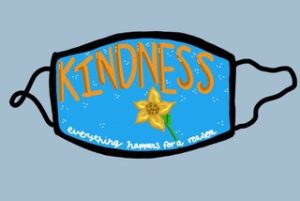

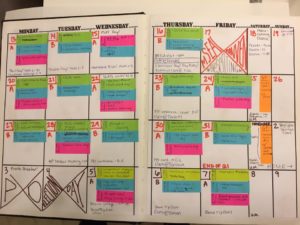
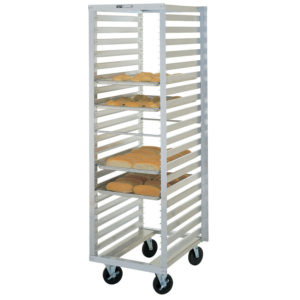
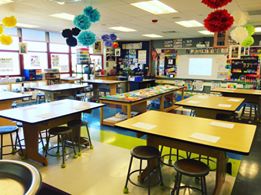

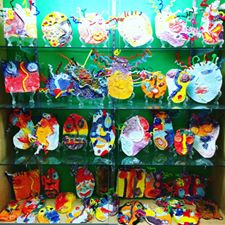
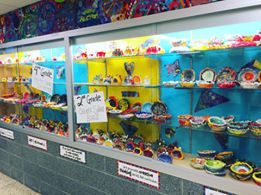
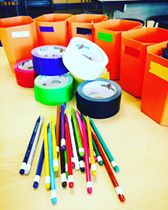
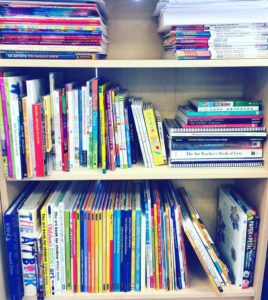

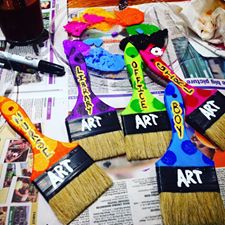
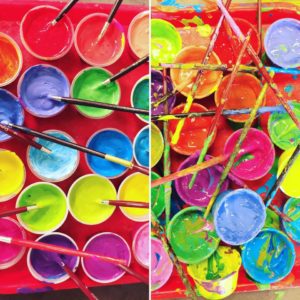
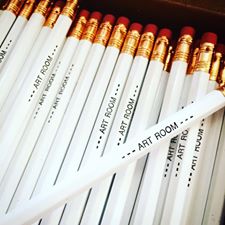
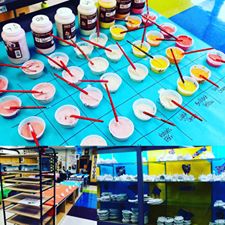
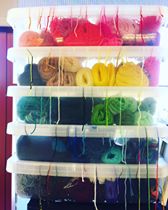
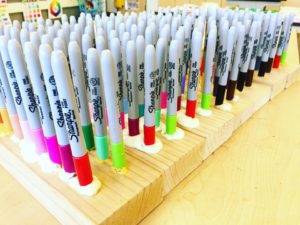
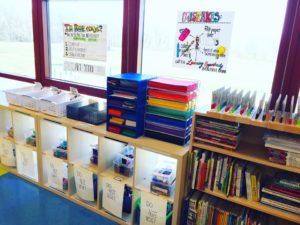
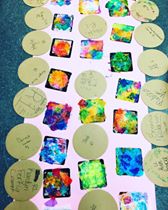

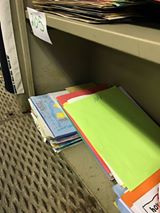
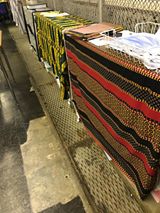
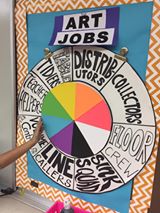
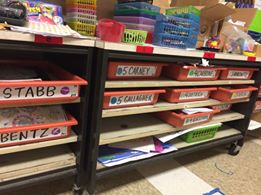
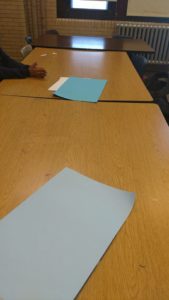
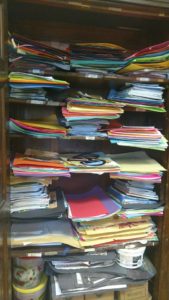
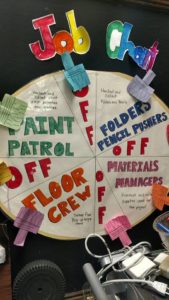
 D5 Creation
D5 Creation